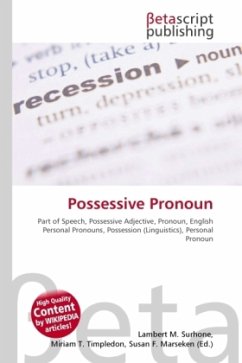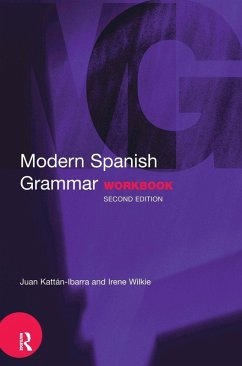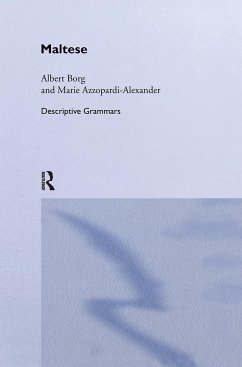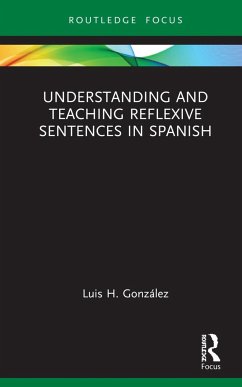
Reflexive Pronoun
Versandkostenfrei!
Versandfertig in 6-10 Tagen
23,99 €
inkl. MwSt.

PAYBACK Punkte
12 °P sammeln!
High Quality Content by WIKIPEDIA articles! A reflexive pronoun is a pronoun that is preceded by the noun or pronoun to which it refers (its antecedent) within the same clause. In generative grammar, a reflexive pronoun is an anaphor that must be bound by its antecedent (see binding). In some languages, there is a difference between reflexive and non-reflexive pronouns; but the exact conditions that determine whether something is bound are not yet well defined and depend on the language in question. It depends on the part of the sentence that the pronoun is in. In English, the reflexive pronou...
High Quality Content by WIKIPEDIA articles! A reflexive pronoun is a pronoun that is preceded by the noun or pronoun to which it refers (its antecedent) within the same clause. In generative grammar, a reflexive pronoun is an anaphor that must be bound by its antecedent (see binding). In some languages, there is a difference between reflexive and non-reflexive pronouns; but the exact conditions that determine whether something is bound are not yet well defined and depend on the language in question. It depends on the part of the sentence that the pronoun is in. In English, the reflexive pronouns are myself, yourself, thyself (archaic), himself (in some dialects, "hisself"), herself, itself, oneself, ourselves, yourselves, and themselves (in some dialects, "theirselves"). In the statements "I see him" and "She sees you", the objects are not the same persons as the subjects, and regular pronouns are used. However, when the person being seen is the same as the person who is seeing, the reflexive pronoun is used: "I see myself" or "She sees herself".












